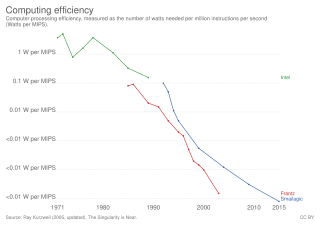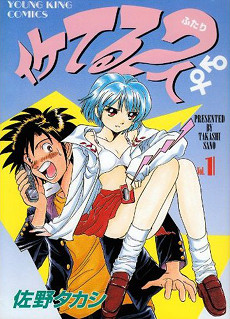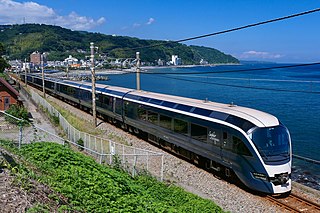
The Motorola 6809 ("sixty-eight-oh-nine") is an 8-bit microprocessor with some 16-bit features. It was designed by Motorola's Terry Ritter and Joel Boney and introduced in 1978. Although source compatible with the earlier Motorola 6800, the 6809 offered significant improvements over it and 8-bit contemporaries like the MOS Technology 6502, including a hardware multiplication instruction, 16-bit arithmetic, system and user stack registers allowing re-entrant code, improved interrupts, position-independent code and an orthogonal instruction set architecture with a comprehensive set of addressing modes.

Instructions per second (IPS) is a measure of a computer's processor speed. For complex instruction set computers (CISCs), different instructions take different amounts of time, so the value measured depends on the instruction mix; even for comparing processors in the same family the IPS measurement can be problematic. Many reported IPS values have represented "peak" execution rates on artificial instruction sequences with few branches and no cache contention, whereas realistic workloads typically lead to significantly lower IPS values. Memory hierarchy also greatly affects processor performance, an issue barely considered in IPS calculations. Because of these problems, synthetic benchmarks such as Dhrystone are now generally used to estimate computer performance in commonly used applications, and raw IPS has fallen into disuse.

Hitachi, Ltd. is a Japanese multinational conglomerate corporation headquartered in Chiyoda, Tokyo, Japan. It is the parent company of the Hitachi Group and had formed part of the Nissan zaibatsu and later DKB Group and Fuyo Group of companies before DKB and Fuji Bank merged into the Mizuho Financial Group. As of 2020, Hitachi conducts business ranging from IT, including AI, the Internet of Things, and big data, to infrastructure.
TRON is an open architecture real-time operating system kernel design. The project was started by Professor Dr. Ken Sakamura of the University of Tokyo in 1984. The project's goal is to create an ideal computer architecture and network, to provide for all of society's needs.

The HD64180 is a Z80-based embedded microprocessor developed by Hitachi with an integrated memory management unit (MMU) and on-chip peripherals. It appeared in 1985. The Hitachi HD64180 "Super Z80" was later licensed to Zilog and sold by them as the Z64180 and with some enhancements as the Zilog Z180.
Share is the name for a closed-source P2P application being developed in Japan by ファイル倉庫, a pseudonym translating as 'file warehouse.' Share was developed to be the successor to Winny. Like Winny, Share functions using a distributed data store referred to as a cache with each computer acting as a node in the network. Netagent published a survey in June 2018 suggesting that Share was the third most popular p2p network in Japan after Winny and Perfect Dark (P2P) with approximately 10,000 nodes connecting each day over Golden Week, down from 30,000 in 2015.

The Okinawa Urban Monorail, also known as Yui Rail, is a monorail line serving the cities of Naha and Urasoe, Okinawa, Japan. Operated by Okinawa Urban Monorail, Inc., it opened on 10 August 2003, and is the only public rail system in Okinawa Prefecture. Yui Rail is the first rail line on Okinawa since World War II. As Okinawa is the island of Japan lying farthest to the south and west that has an active rail line, Akamine Station and Naha Airport Station, the southernmost and westernmost rail stations in Japan respectively, lie on this line. It uses the OKICA as its contactless smart card, and integrates with Suica and other major Japanese IC cards from 10 March 2020.
V850 is a 32-bit RISC CPU architecture produced by Renesas Electronics for embedded microcontrollers. It was designed by NEC as a replacement for their earlier NEC V60 family, and was introduced shortly before NEC sold their designs to Renesas in the early 1990s. It has continued to be developed by Renesas as of 2018.
The transistor count is the number of transistors in an electronic device. It is the most common measure of integrated circuit complexity. The rate at which MOS transistor counts have increased generally follows Moore's law, which observed that the transistor count doubles approximately every two years. However, being directly proportional to the area of a chip, transistor count does not represent how advanced the corresponding manufacturing technology is: a better indication of this is the transistor density.

Iketeru Futari is a Japanese manga series written and illustrated by Takashi Sano. It was serialized in the Shōnen Gahōsha magazine Young King Comics from 1997 to 2010.
The Japan Basketball League (JBL) was a professional basketball league in Japan. It made up the top-tier of basketball in Japan alongside the bj league, Japan's other basketball competition, with no promotion and relegation between bj and the JBL.
The 3 μm process is the level of MOSFET semiconductor process technology that was reached around 1977, by leading semiconductor companies such as Intel.

Perfect Dark (パーフェクトダーク) is a peer-to-peer file-sharing (P2P) application from Japan designed for use with Microsoft Windows. It was launched in 2006. Its author is known by the pseudonym Kaichō. Perfect Dark was developed with the intention for it to be the successor to both Winny and Share software. While Japan's Association for Copyright of Computer Software reported that in January 2014, the number of nodes connected on Perfect Dark was less than on Share, but more than on Winny, Netagent in 2018 reported Winny being the largest with 50 000 nodes followed by Perfect Dark with 30 000 nodes followed by Share with 10 000. Netagent asserts that the number of nodes on Perfect Dark have fallen since 2015 while the numbers of Winny hold steady. Netagent reports that users of Perfect Dark are most likely to share books/manga.
The HITAC S-3000 is a former family of vector supercomputers, which was developed, manufactured and marketed by Hitachi. Announced in April 1992, the family succeeded the HITAC S-820. The S-3000 family comprised the low-end and mid-range S-3600 models and the high-end S-3800 models. Unlike Hitachi's previous generations of supercomputers, the S-3000 family was marketed outside Japan.

Japan operates a number of centers for supercomputing which hold world records in speed, with the K computer becoming the world's fastest in June 2011. and Fugaku took the lead in June 2020, and furthered it, as of November 2020, to 3 times faster than number two computer.
Yoshiki Tsukamoto is a Japanese male badminton player.

The E261 series is an electric multiple unit (EMU) train type operated by East Japan Railway Company in Japan on Saphir Odoriko limited express services between Tokyo and Izukyū-Shimoda. It was designed to replace the older 251 series trains that were used on Super View Odoriko limited express services from April 28, 1990, until March 13, 2020.
The A64FX is a 64-bit ARM architecture microprocessor designed by Fujitsu. The processor is replacing the SPARC64 V as Fujitsu's processor for supercomputer applications. It powers the Fugaku supercomputer, ranked in the TOP500 as the fastest supercomputer in the world from June of 2020, until falling to second place behind Frontier in June of 2022.









